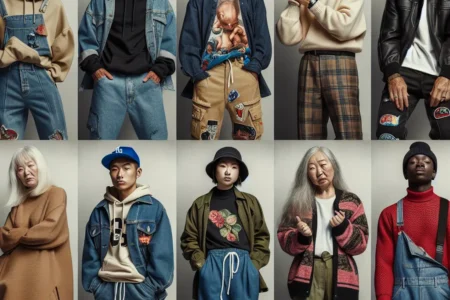The Rise of Streetwear: How It’s Shaping Mainstream Fashion
Streetwear has taken the fashion world by storm, originating from urban culture and the skateboarding scene and evolving into a multi-billion-dollar industry with a global impact. Its authenticity, non-conformist attitude, and resonance with the younger demographic have propelled it to the forefront of mainstream fashion. This subversive approach has not only influenced luxury brands but also disrupted traditional fashion hierarchies, blurring the lines between luxury and street style, and redefining what is considered fashionable. The impact of streetwear extends to individuality and self-expression, challenging traditional notions of sartorial elegance and sophistication. As streetwear democratizes style, its undeniable influence marks a significant cultural shift in the fashion industry.
Unpacking Streetwear’s Impact on Today’s Clothing Trends
Streetwear’s profound influence on mainstream fashion is rooted in urban culture and a focus on self-expression, individuality, and authenticity. It has redefined the fashion landscape by prioritizing comfort and functionality, offering a departure from the restrictive nature of traditional fashion. Streetwear’s impact also includes diversifying the fashion industry, reflecting a wider range of identities and perspectives and connecting with diverse communities. Its influence cannot be overstated, emphasizing individuality, inclusivity, and comfort, presenting an exciting opportunity for the fashion industry to continue pushing boundaries and challenging conventions.
From Sidewalk to Catwalk: Streetwear’s Journey into Mainstream Fashion
Streetwear, originating from urban culture, has risen to dominate modern fashion trends, shaping mainstream clothing with its casual, comfortable, and edgy aesthetic. Its evolution into a multi-billion-dollar industry has disrupted traditional fashion hierarchies, blending luxury and street style, and redefining what is considered fashionable. Streetwear’s journey into mainstream fashion has democratized style, empowering individuals to embrace their unique fashion sensibilities, and marked a significant cultural shift in the fashion industry.


